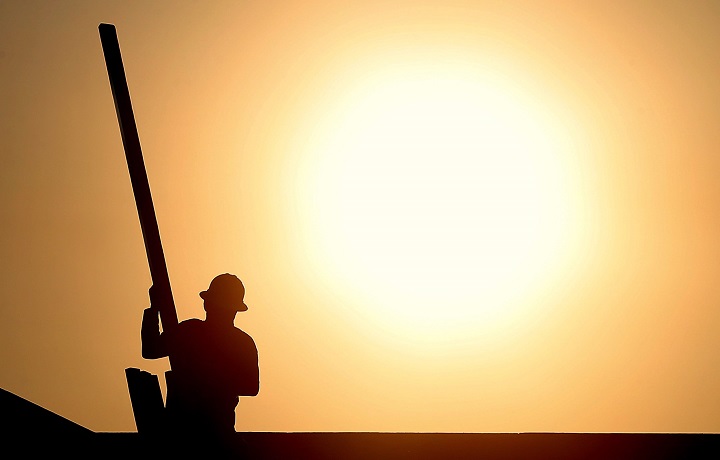Quebec’s health and safety board (CNESST) has issued a safety warning alerting workers to the danger of heat stroke as temperatures continue to rise.

While most of Quebec’s construction workers are on vacation until August 5 for what is known as the construction holiday, some work sites remain open.
READ MORE: Heat Stroke: What you need to know
The CNESST is reminding employers and workers that physical exertion in hot weather can be dangerous and to take the necessary precautions.
“It can be dangerous or even fatal to perform physical work in the heat,” the board said in a news release. “It is therefore essential to take preventive measures to avoid heat stroke.”

Get breaking National news
Heat stroke is defined as a rise in the body’s core temperature to above 40 C. It can cause brain damage, organ failure and death.
READ MORE: Heat stroke, heat exhaustion and sun poisoning: What you should know
According to CNESST, the risk of heat stroke is greater in the first days of a heat wave, because the body needs time to acclimatize to the heat.
The group issued a few preventative safety tips to help workers avoid heat stroke.
Those recommendations include drinking a glass of water every 20 minutes, wearing light-coloured clothing — preferably cotton — to allow sweat to evaporate, and wearing a hat while working outdoors.
The board is also urging workers to keep watch on their co-workers and report any abnormal behaviour to their supervisor or first-aid practitioners.
Some of the signs of heat stroke include behavioural changes such as confusion, disorientation, or staggering.
Other symptoms can include:
- Lack of sweating; though those with exertional heat stroke may experience profuse sweating, according to Health Canada
- Red, hot, and dry skin
- Nausea and vomiting
- Rapid heartbeat, which may be either strong or weak
- Rapid, shallow breathing
- Seizures
- Dizziness and light-headedness
- Throbbing headache
- Muscle weakness or cramps
- Hallucinations
- Unconsciousness
According to CNESST, keeping workers safe is a shared responsibility and employers must do their part, in terms of postponing unnecessary arduous tasks to a later date or a cooler time of day, assigning lighter work, and setting up both work and rest areas in the shade, or in a cool or air-conditioned place.
In case of a heat-related medical emergency CNESST recommends calling 911 and doing the following:
- The victim should be placed in the shade or a cool spot, and their clothing removed.
- Splash water over their body
- Provide as much ventilation as possible
- Provide fresh water to drink in small quantities if the victim is conscious and lucid
— With files from the Canadian Press



Comments